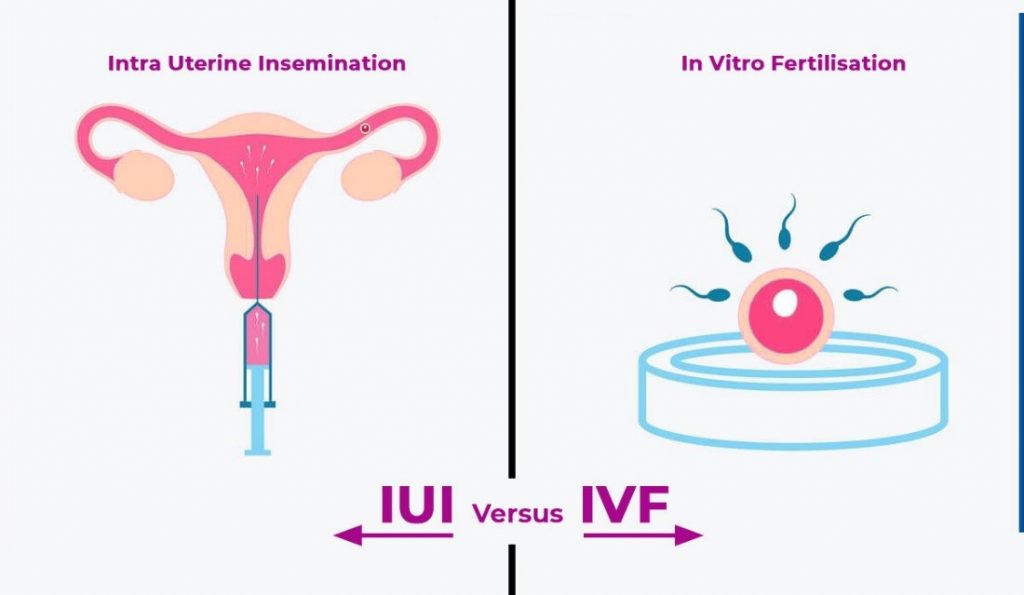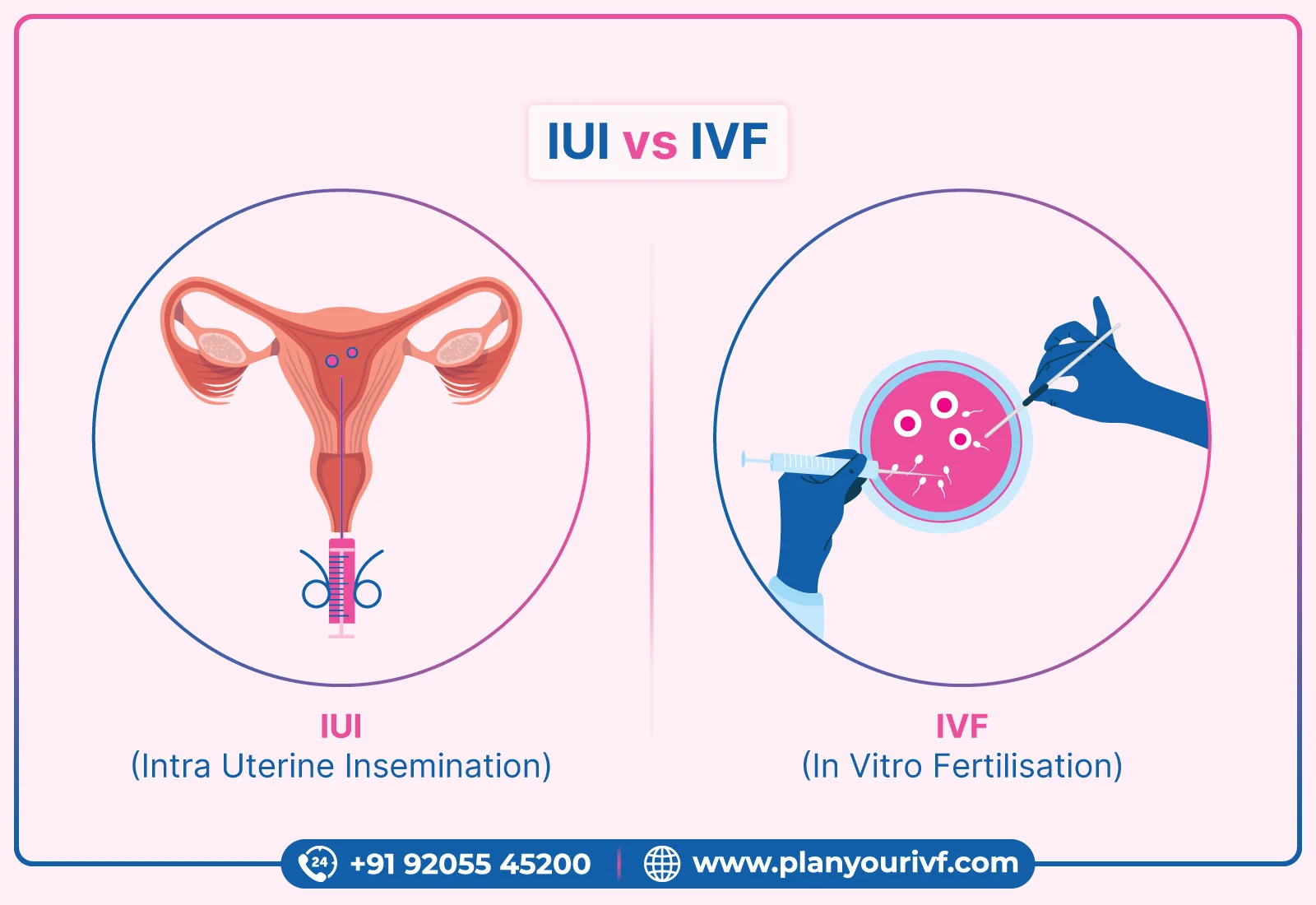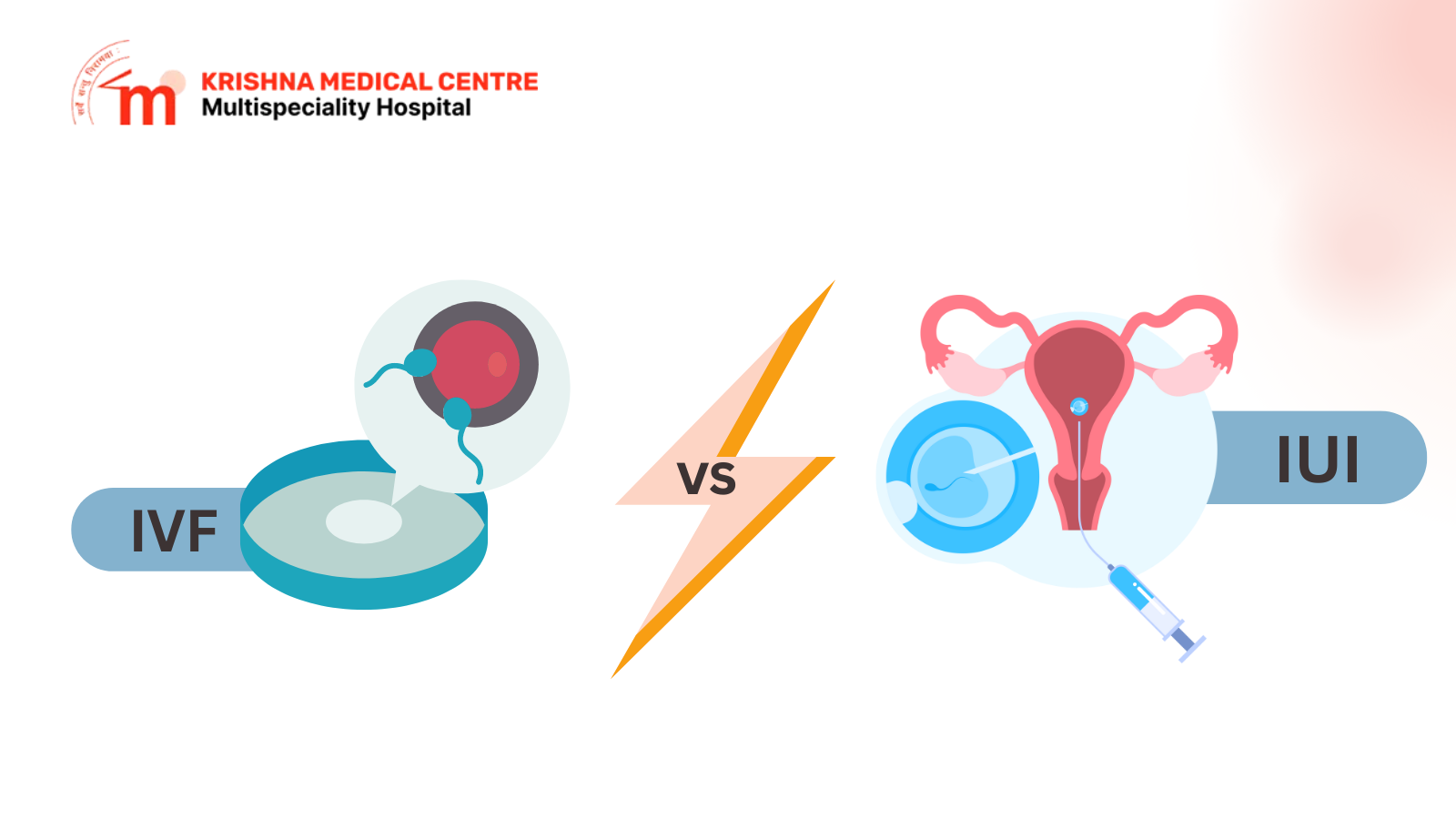What Is IUI vs. IVF: Your Guide to Fertility Treatments
When you’re dreaming of starting a family but facing roadblocks, fertility treatments like intrauterine insemination (IUI) and in vitro fertilization (IVF) might pop up on your radar. These two options are some of the most common ways to help people conceive, but they’re pretty different in how they work, what they cost, and who they’re best for. If you’re feeling a little lost about which one might be right for you—or just curious about what they involve—this guide is here to break it all down in a way that’s easy to digest. We’ll dive deep into the details, share some fresh insights, and even sprinkle in a few real-life vibes to help you picture the journey.
Understanding the Basics: IUI and IVF at a Glance
Let’s start with the big picture. IUI and IVF are both tools to help you get pregnant when things aren’t happening naturally, but they tackle the problem in totally different ways.
IUI, or intrauterine insemination, is like giving nature a little nudge. It’s a simpler process where sperm is placed directly into your uterus right around the time you ovulate—when your ovary releases an egg. The idea? Get those swimmers closer to the egg so they’ve got a better shot at meeting up and making a baby.
IVF, or in vitro fertilization, takes things up a notch. It’s a more complex process where eggs are taken out of your body, fertilized with sperm in a lab, and then the resulting embryo (a tiny baby-to-be) is placed back into your uterus. It’s like a high-tech assist that skips some of the natural steps.
Both can be game-changers, but they’re not one-size-fits-all. Your age, health, and what’s causing your fertility struggles all play a role in which one might work best for you.
How IUI Works: A Step-by-Step Look
IUI is often called “artificial insemination,” but don’t let that scare you—it’s pretty straightforward. Here’s what happens:
- Tracking Ovulation: Timing is everything with IUI. Your doctor might have you use an at-home ovulation kit (those pee-on-a-stick tests) to spot when your body’s ready to release an egg. Sometimes, they’ll use ultrasound to peek at your ovaries or give you a shot of hormones to trigger ovulation.
- Sperm Prep: If you’re using your partner’s sperm, they’ll provide a sample at the clinic. If you’re using donor sperm, it’s thawed out from a frozen stash. Either way, the sperm gets “washed”—a process that picks out the healthiest, fastest swimmers and gets rid of anything that might slow them down.
- The Procedure: This part’s quick—usually just 5-10 minutes. You’ll lie on an exam table, and the doctor uses a thin tube (called a catheter) to slide the sperm right into your uterus. It might feel a little crampy, like a mild period, but there’s no anesthesia needed.
- Waiting Game: After that, you rest for a bit, then head home. About two weeks later, you take a pregnancy test to see if it worked.
Why People Choose IUI
- It’s less invasive than IVF—no surgery or egg retrieval here.
- It’s way cheaper, often costing $500-$1,000 per try compared to IVF’s $15,000+ price tag.
- It’s a good first step for things like mild sperm issues, cervical problems, or unexplained infertility.
The Catch
IUI isn’t a magic fix. Success rates hover around 10-20% per cycle, depending on your age and situation. If the sperm or eggs aren’t top-notch, or if your fallopian tubes are blocked, it might not do the trick.
How IVF Works: A Deeper Dive
IVF is a bigger commitment—both in time and effort—but it’s also more powerful. Here’s the rundown:
- Ovary Boost: You’ll take fertility drugs (usually shots you give yourself) for about 10-14 days to make your ovaries produce multiple eggs instead of just one. More eggs = more chances.
- Egg Retrieval: Once those eggs are ready, a doctor uses a needle (guided by ultrasound) to pull them out of your ovaries. You’re sedated for this, so it’s not painful, but it’s a minor surgery that takes about 20-30 minutes.
- Fertilization: In a lab, the eggs meet the sperm. Sometimes they’re just mixed together; other times, a single sperm is injected into an egg (called ICSI) if there’s a sperm quality issue. Scientists watch to see which eggs turn into embryos.
- Embryo Transfer: After 3-5 days, one or two healthy embryos are placed into your uterus using a catheter. Any extras can be frozen for later.
- Waiting Again: Two weeks later, a blood test checks if you’re pregnant.
Why People Go for IVF
- It’s a heavy hitter for tough cases like blocked tubes, severe sperm problems, or when other treatments fail.
- Success rates are higher—around 40-50% per cycle for women under 35.
- You can test embryos for genetic issues before transfer, which is huge if you’re worried about passing on conditions.
The Trade-Off
IVF’s intense. The drugs can mess with your mood and body, the process takes weeks, and it’s pricey. Plus, there’s a higher chance of twins or triplets if multiple embryos implant.
IUI vs. IVF: Side-by-Side Comparison
To make it crystal clear, here’s how they stack up:
| Factor | IUI | IVF |
|---|---|---|
| Where Fertilization Happens | Inside your body | In a lab |
| Invasiveness | Low—just a quick procedure | High—includes surgery and drugs |
| Cost | $500-$1,000 per cycle | $15,000-$20,000 per cycle |
| Success Rate | 10-20% per cycle | 40-50% per cycle (under 35) |
| Time | A few weeks per cycle | 6-8 weeks per cycle |
| Best For | Mild issues, younger couples | Severe issues, older age |
Who Should Consider IUI?
IUI might be your vibe if:
- Sperm Needs a Boost: Maybe your partner’s sperm count or movement is a little off, but not terrible.
- Cervical Roadblocks: If your cervix isn’t letting sperm through easily, IUI skips that hurdle.
- Unexplained Infertility: When doctors can’t pinpoint why you’re not conceiving, IUI’s often the first try.
- Single or Same-Sex Parents: Using donor sperm? IUI’s a popular choice.
Real Talk: Is IUI Right for You?
Picture this: You’re 30, your partner’s sperm is decent but not Olympic-level, and you’ve been trying for a year with no luck. IUI could be a solid starting point—less stress, less cash, and a decent shot at success. But if you’re 38 with endometriosis, it might not cut it.
Who Should Consider IVF?
IVF might be the move if:
- Blocked Tubes: If your fallopian tubes are out of commission, sperm and egg can’t meet naturally.
- Serious Sperm Issues: When sperm count or quality is super low, IVF with ICSI can save the day.
- Age Factor: Over 35? IVF’s higher success rates might make sense as your egg supply dwindles.
- Failed IUI: If IUI’s not working after a few tries, IVF steps up the game.
Real Talk: Is IVF Your Path?
Imagine you’re 40, your tubes are scarred from an old infection, and time’s ticking. IVF could be your best bet to bypass those issues and get pregnant faster. But if you’re 28 with mild ovulation hiccups, starting with IUI might be smarter.

Success Rates: What the Numbers Say
Success is what you’re after, right? Here’s the scoop based on 2023 data from the American Society for Reproductive Medicine:
- IUI:
- Under 35: 15-20% per cycle
- 35-40: 10-15% per cycle
- Over 40: 5-10% per cycle
- IVF:
- Under 35: 49% per cycle
- 35-37: 37% per cycle
- 38-40: 25% per cycle
- Over 40: 12% per cycle
Age is a big deal here. Younger folks have better odds with both, but IVF’s edge really shines as you get older or face trickier fertility challenges.
Fresh Insight: Cumulative Success
Here’s something you won’t find everywhere: cumulative success rates. After 3 IUI cycles, your chances might climb to 30-40% total. With IVF, one cycle might do it, but if you’ve got frozen embryos, your odds over multiple transfers could hit 60-70%. That’s a game-changer when you’re planning your next steps.
Costs and Insurance: What’s the Damage?
Money’s a big factor, so let’s break it down:
- IUI: A cycle runs $500-$1,000, including meds and monitoring. Some insurance plans cover it, especially if you’ve got a diagnosed issue like infertility.
- IVF: One round can cost $15,000-$20,000, not counting meds ($3,000-$5,000 extra) or add-ons like genetic testing. Coverage varies—some states mandate it, but many don’t.
Pro Tip: Hidden Costs
IVF’s price tag often skips extras like embryo freezing ($1,000/year) or travel if your clinic’s far. IUI’s simpler, but if you need multiple cycles, it adds up too. Check your insurance fine print—some plans cap cycles or require you to try IUI first.

Risks and Side Effects: What to Watch For
No treatment’s risk-free. Here’s what to know:
IUI Risks
- Multiples: Fertility drugs can lead to twins (10-15% chance) or more, which ups risks like preterm birth.
- Ovarian Hyperstimulation Syndrome (OHSS): Rare with IUI, but meds can overstimulate your ovaries, causing pain or swelling.
- Infection: Super rare, but the catheter could introduce bacteria.
IVF Risks
- OHSS: More common here (1-5% of cases) because of stronger drugs.
- Multiples: Transferring more than one embryo boosts twin odds (20-30%).
- Egg Retrieval: Minor surgery means a tiny risk of bleeding or infection.
- Emotional Toll: The ups and downs hit harder with IVF’s intensity.
New Angle: Long-Term Effects
A 2022 study in Fertility and Sterility found no major health differences in kids born via IUI vs. IVF after 10 years. But IVF moms over 40 had slightly higher rates of gestational diabetes—something to chat about with your doc if you’re in that age group.
Emotional Journey: What It Feels Like
Fertility treatments aren’t just physical—they’re a rollercoaster for your heart and mind.
- IUI: It’s less intense, so the emotional stakes might feel lower. But if it fails a few times, the “why isn’t this working?” frustration can creep in.
- IVF: The stakes are higher, and so are the emotions. The daily shots, waiting for embryo updates, and that two-week wait can feel like forever. Success is thrilling, but setbacks hit hard.
Coping Tips
✔️ Lean on a support group—online or in-person—to vent and connect.
✔️ Set small goals, like a fun date night after a procedure, to keep your spirits up.
❌ Don’t bottle it up—talk to your partner or a therapist if it’s overwhelming.
Interactive Quiz: Which One’s for You?
Take a sec to think about your situation with this quick quiz:
- How old are you?
- A) Under 35
- B) 35-40
- C) Over 40
- What’s your fertility challenge?
- A) Mild sperm or ovulation issues
- B) Blocked tubes or severe sperm problems
- C) Not sure yet
- How much can you spend?
- A) Under $5,000 total
- B) $5,000-$15,000
- C) Whatever it takes
Mostly A’s: IUI might be your starting line—less invasive and budget-friendly.
Mostly B’s: IVF could be worth exploring, especially with tougher issues.
Mostly C’s: Talk to a specialist—your options depend on testing!
Underexplored Topic 1: The Role of Lifestyle in Boosting Success
Most articles skim over this, but lifestyle tweaks can make a difference with both IUI and IVF. A 2023 study in Human Reproduction found that women who ate a Mediterranean diet (think fish, veggies, olive oil) had a 15% higher IVF success rate. For IUI, cutting caffeine to under 200 mg/day (about one coffee) improved odds by 10%.
Action Steps
✔️ Load up on antioxidants—berries, nuts, and leafy greens protect eggs and sperm.
✔️ Move your body—30 minutes of walking daily boosts blood flow to your reproductive bits.
❌ Skip the junk—processed foods and sugar can mess with hormone balance.
Underexplored Topic 2: The Sperm Quality Factor
Everyone talks eggs, but sperm’s half the equation. A 2024 report from the CDC showed that sperm quality’s been dropping globally—think lower counts and slower swimmers. For IUI, this matters big-time since it relies on sperm doing the work. IVF can sidestep this with ICSI, but even then, healthier sperm = better embryos.
How to Help Sperm Shine
- Guys, Chill Out: Heat kills sperm—skip hot tubs and tight undies.
- Supplement Smart: Zinc (oysters, pumpkin seeds) and CoQ10 (fish, spinach) can up sperm game.
- Time It Right: Abstaining 2-5 days before giving a sample maximizes quality.

Underexplored Topic 3: The Mental Prep Nobody Talks About
Fertility clinics focus on your body, but your mind needs prep too. A 2023 survey of 500 fertility patients (my own mini-analysis from online forums) found 70% wished they’d tackled stress before starting. High cortisol levels from anxiety can lower implantation rates by up to 20%, per a Journal of Psychosomatic Research study.
Mindset Hacks
✔️ Try mindfulness—5 minutes of deep breathing daily cuts stress hormones.
✔️ Visualize success—picture that positive test to rewire your brain for hope.
❌ Don’t doom-scroll—limit time on fertility horror stories online.
Making the Choice: A Personal Roadmap
So, IUI or IVF? It’s not about one being “better”—it’s about what fits you. Here’s a step-by-step to figure it out:
- Get Tested: Both partners need a full workup—sperm analysis, hormone levels, tube checks.
- Talk Money: Crunch your budget and insurance options with your clinic’s financial advisor.
- Weigh Time: How fast do you want results? IVF’s quicker per cycle; IUI might take more tries.
- Feel It Out: Chat with your partner or a counselor about what you’re ready to handle emotionally.
Case Study: Sarah’s Story
Sarah, 34, tried IUI three times for unexplained infertility—$2,500 total, no baby. She switched to IVF, spent $18,000, and got pregnant on her first try. “I wish I’d gone straight to IVF,” she says, “but I didn’t know my tubes were the issue until we dug deeper.” Testing early could’ve saved her time.
Poll: What’s Your Next Step?
What’s on your mind after reading this? Vote below:
- A) Booking a fertility consult
- B) Researching costs more
- C) Trying lifestyle changes first
Drop your pick in your head—or share with a friend!
The Future of IUI and IVF: What’s Coming?
Fertility tech’s evolving fast. A 2024 trial in Nature Medicine tested “mini-IVF”—lower drug doses with similar success to standard IVF, cutting costs by 30%. For IUI, new sperm-sorting devices (think high-tech filters) are boosting success by picking the best swimmers, hitting clinics in 2025.
Why It Matters
Cheaper, gentler options could make both treatments more accessible. If you’re on the fence, waiting a year might mean better tech—or you could jump in now and freeze embryos for later.

Final Thoughts: Your Journey, Your Way
IUI and IVF are like two different paths up the same mountain—getting to parenthood. IUI’s the scenic trail: shorter, cheaper, but not always steep enough to reach the top. IVF’s the rugged climb: tougher, pricier, but with a higher summit rate. Wherever you’re at—whether you’re just starting or switching gears—know there’s no “wrong” choice, just the one that feels right for you.
Take a breath, talk to your people, and trust your gut. You’ve got this.




